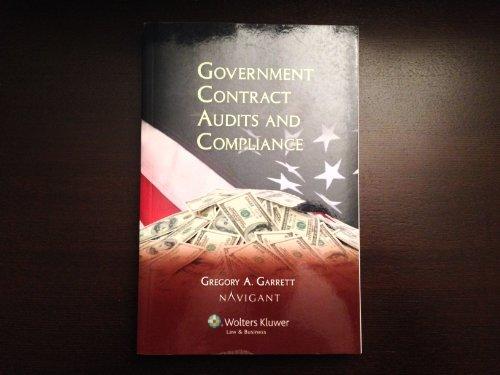Question
Susan Strickler, a bioengineer and founder of XL Biosystems Inc, together with two other co-founders invested a total of $60,000 from personal funds as seed
Susan Strickler, a bioengineer and founder of XL Biosystems Inc, together with two other co-founders invested a total of $60,000 from personal funds as seed financing when they launched their new venture in March 2022. Susan, who had the initial idea for XL and had invested the greatest amount of sweat equity to date, invested $20,000 and received 50,000 shares of XL common stock in return. The other two co-founders also invested $20,000 each and each received 25,000 shares. No other shares have been issued since. When the company was launched in March 2022, the founders also secured the backing of Meg Hopkins, a local angel investor with substantial and relevant experience in security systems. Meg invested $500,000 in XL with a post-money SAFE. Terms of the SAFE included: (i) a conversion discount of 20% tied to the Series A share price; (ii) a $1,000,000 minimum future financing for conversion of the SAFE; (iii) a post-money valuation cap of $5,000,000 for the SAFE; and, (iv) if XL is acquired prior to a Series A financing, Meg would receive 150% of the SAFEs principal investment amount. As of today (i.e., March 2023) they have successfully developed a working prototype of their revolutionary new system-on-a-chip for detecting hazardous biological agents using micro-electro-mechanical systems (MEMS) technology. Their MEMS biochip system has already attracted favorable attention from a number of security systems companies. Carl Montgomery, a local angel investor with substantial experience in security technologies, has been introduced to Susan by a trusted acquaintance and is considering an investment in XL. Carl has reviewed XLs business plan and has conducted enough due diligence to be comfortable with an investment in the company. XLs business plan calls for two new rounds of financing. Carl is planning to be the Series A investor, which is planned for March 2023 in the amount of $1,500,000. These funds will be used primarily for hiring development engineers, for further product development and market research, and for beta testing the prototype. The Series B financing is planned for March 2025 in the amount of $11,000,000 primarily for hiring production engineers and marketing personnel, for initiating marketing and distribution activities, and for launching production. Financial projections in the plan estimate annual sales revenues of $15,000,000 by March 2027 under a success scenario. The plan also anticipates that XL will be acquired by a strategic investor in March 2027, this being the exit strategy for its investors. Carls due diligence has determined that a typical price/revenue ratio for early growth biochip companies is about 3:1. Carl has introduced Susan to Leslie Neal, a partner in Technology Ventures Corp. (TVC). TVC is a regional venture capital firm. Like Carl, Leslie has significant experience with security technologies and feels that XL would be an ideal complement to TVCs portfolio of high-tech startups. TVC has expressed interest in funding the Series B round of XLs financing plan, assuming that the venture continues to look promising and achieves its interim milestone targets. TVC intends to invest in XL through its new TVC High-Tech III Fund that includes funds from high net worth individuals and institutional investors. TVCs objective is to earn an annual rate of return of 30% (compounded annually) on its investments to cover both their general partner fees and their investors target returns.
Question #6. Based on their prior experience, both Carl and Leslie believe that stock options will be needed as incentives to recruit a senior management team for XL. They convince Susan to plan for the future creation of a pool of new XL shares for incentive stock options equal, in total, to 12% of the company at the time of the liquidity event at March 2027. During TVCs term sheet negotiations, it is agreed that TVC will receive convertible preferred XL stock in return for their investment in Series B. The founders shares, Carls Series A shares and the option pool shares remain common stock. The difference between common and preferred shares is that preferred shareholders receive a fixed annual dividend payment equal to a prescribed percentage of their investment. In this case, TVC negotiates for a cumulative non-cash non-compounding dividend of 8% per annum. At the time of the liquidity event at March 2027, each preferred share is convertible into one new XL common share and the accumulated dividends are convertible into new XL common shares at the original price per share paid by TVC. TVC priced the XL deal assuming that it received non-dividend-bearing common stock and that an option pool would be created at the time of the liquidity event. Note: the option pool equals 12% of the company, including the new converted dividend shares, at the time of the liquidity event in March 2027. What compound annual rate of return will TVC realize on its Series B investment as a result of using convertible preferred stock? What compound annual rate of return will be realized from Carls Series A investment, which is not convertible preferred stock? What will be the cash distributions realized by the founders and Meg? (In answering this question, ignore ANY delay scenario).
Step by Step Solution
There are 3 Steps involved in it
Step: 1

Get Instant Access to Expert-Tailored Solutions
See step-by-step solutions with expert insights and AI powered tools for academic success
Step: 2

Step: 3

Ace Your Homework with AI
Get the answers you need in no time with our AI-driven, step-by-step assistance
Get Started


